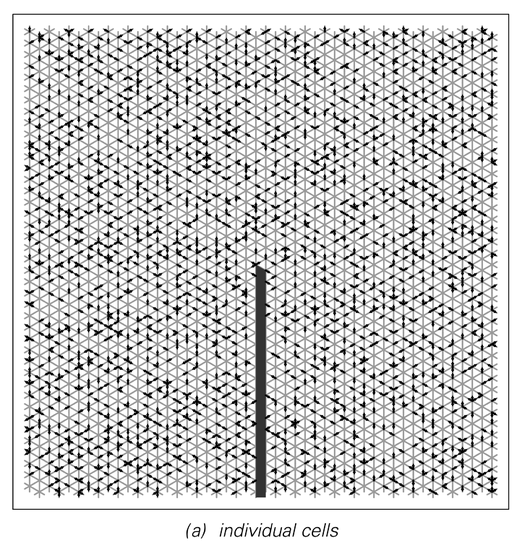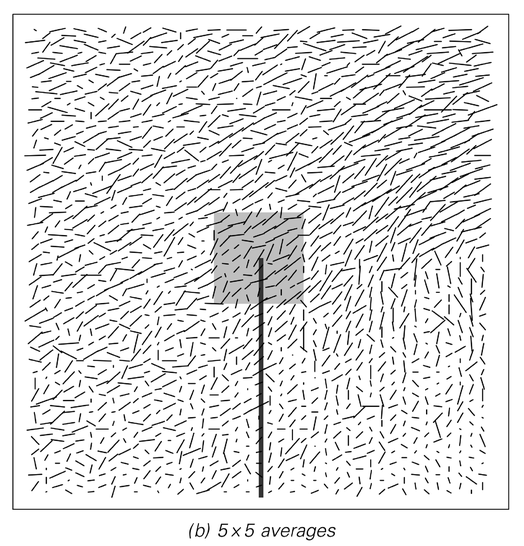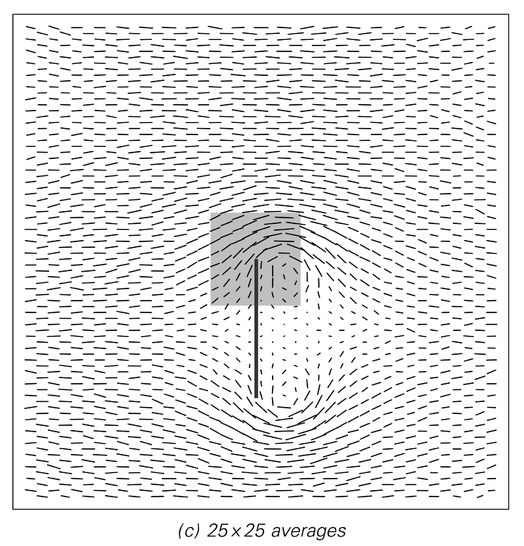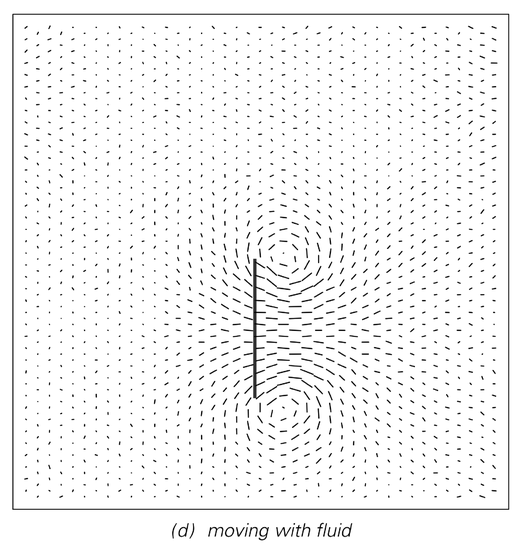The pictures below give an example of such a system. In the top row of pictures—as well as picture (a)—all one sees is a collection of discrete particles bouncing around. But if one zooms out, and looks at average motion of increasingly large blocks of particles—as in pictures (b) and (c)—then what begins to emerge is behavior that seems smooth and continuous—just like one expects to see in a fluid.

 |  |  |

A simple cellular automaton system set up to emulate the microscopic behavior of molecules in a fluid. At each step the configuration of particles is updated according to the simple collision rules shown above. Particles are reflected whenever they hit the plate. A steady stream of particles is inserted in a regular way far to the left, with an average speed 3/10 of the maximum possible. Picture (a) shows the configuration of individual particles; pictures (b) and (c) show total velocities of successively larger blocks of particles. Picture (d) is obtained by transforming to a reference frame in which the fluid is on average at rest.



